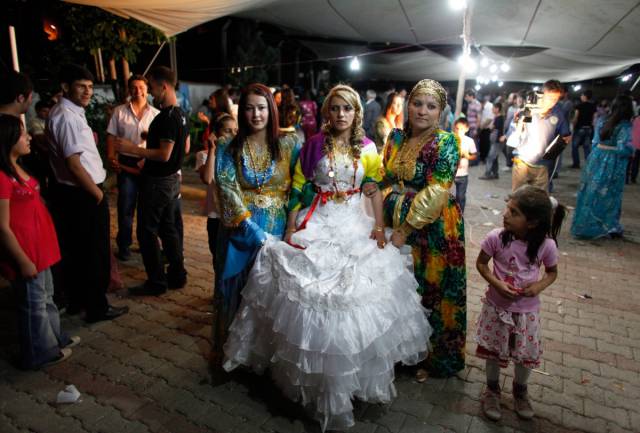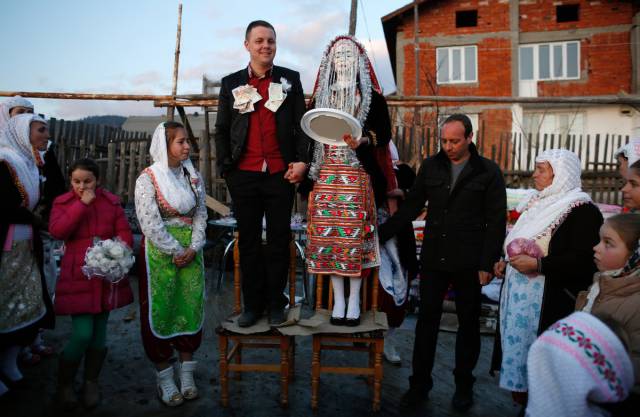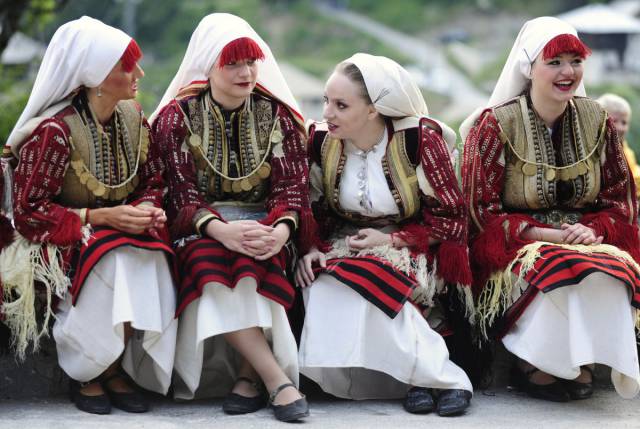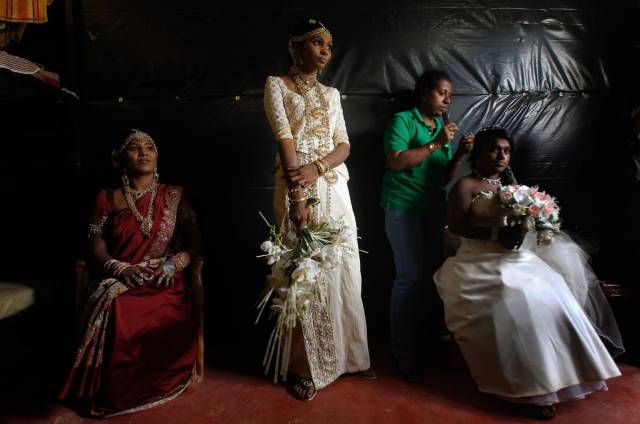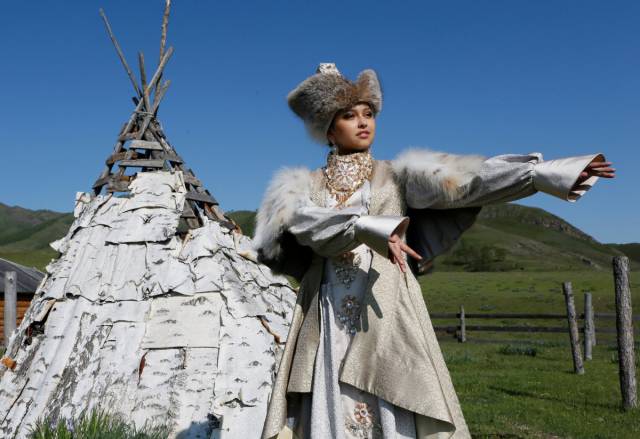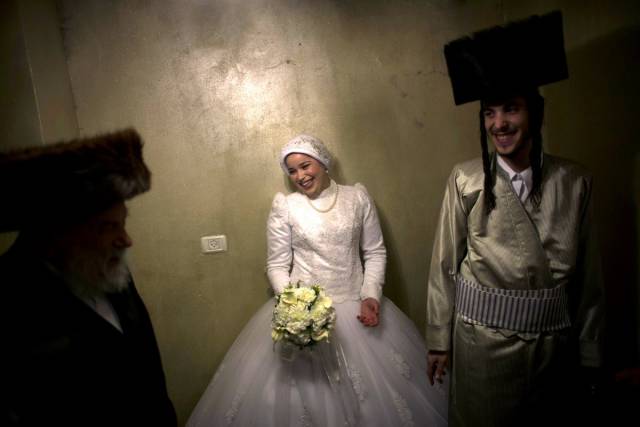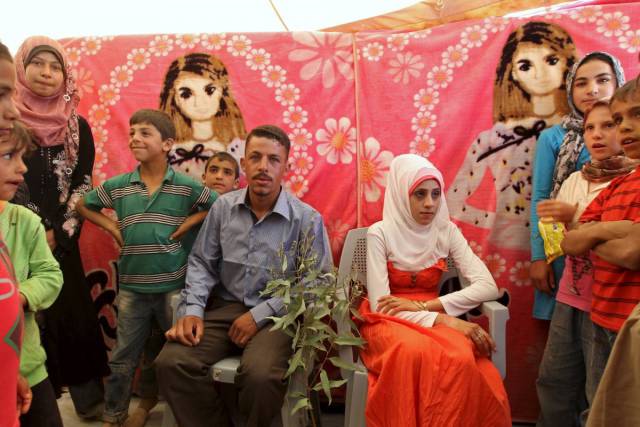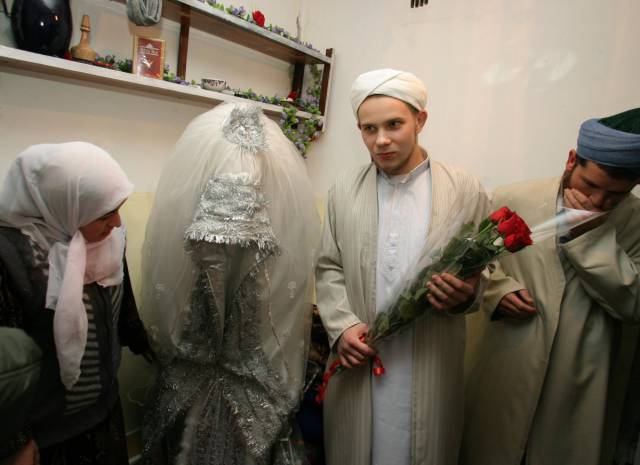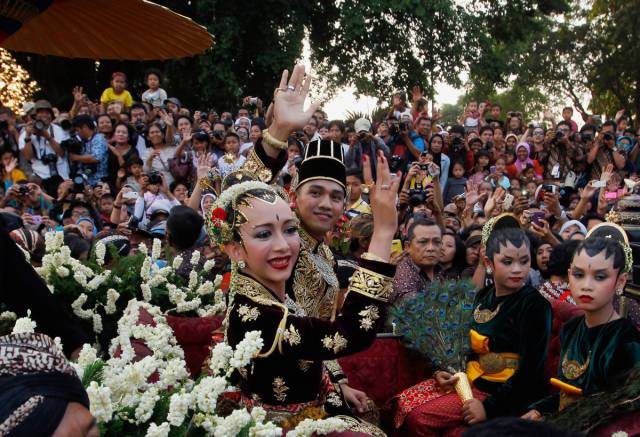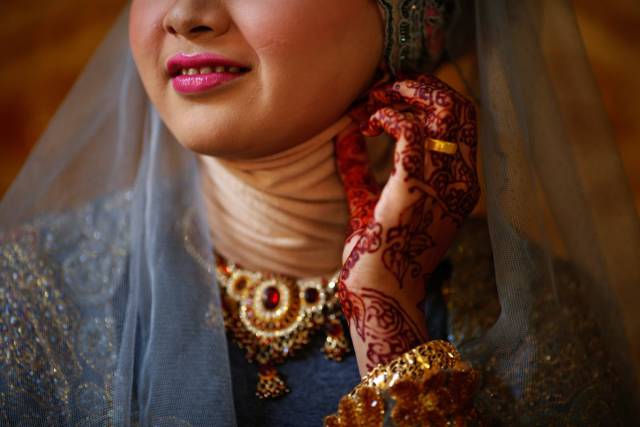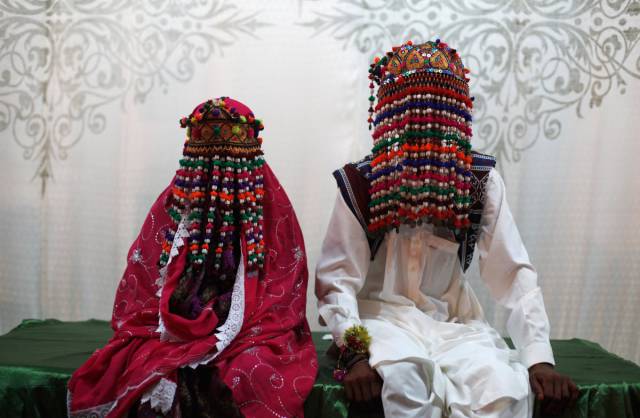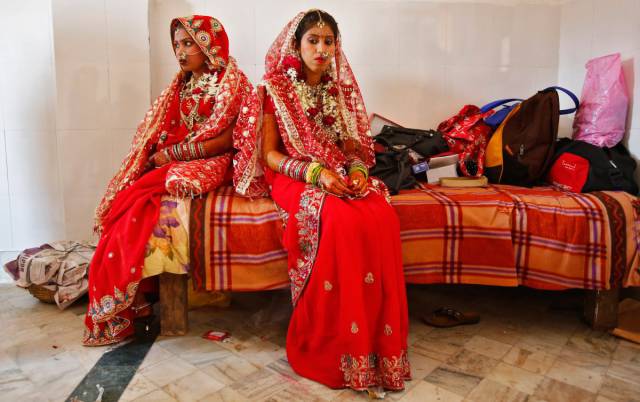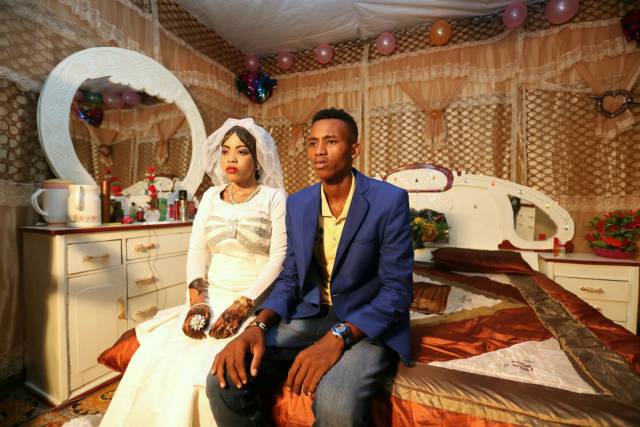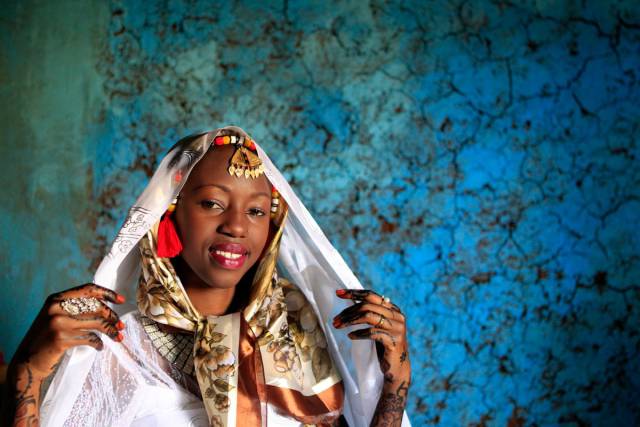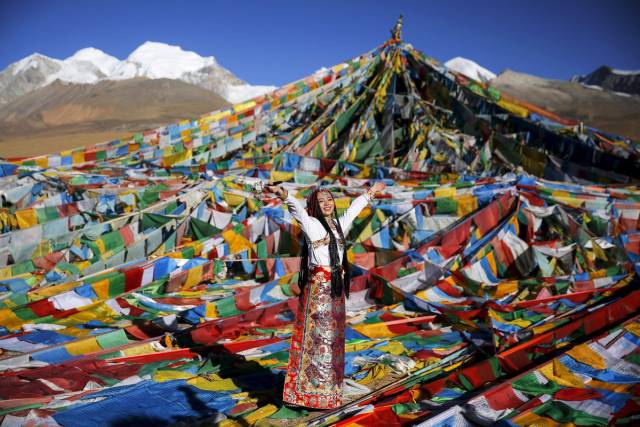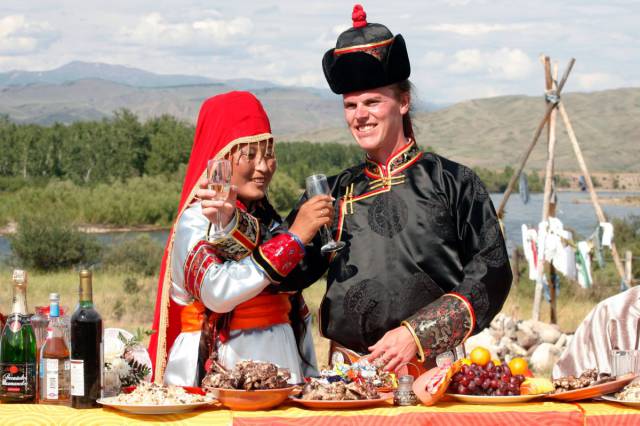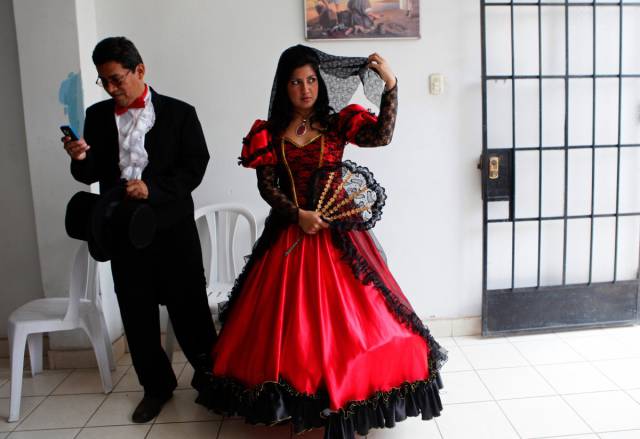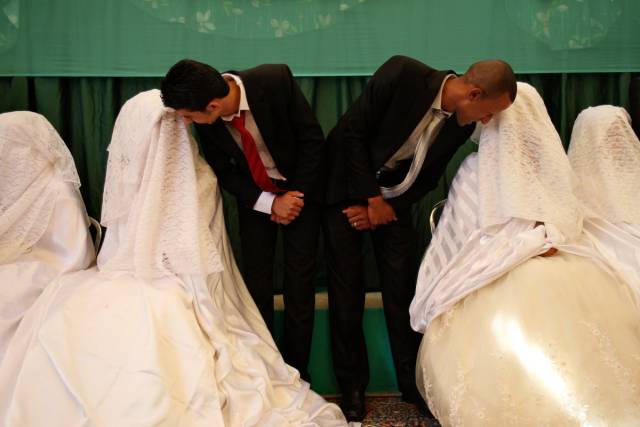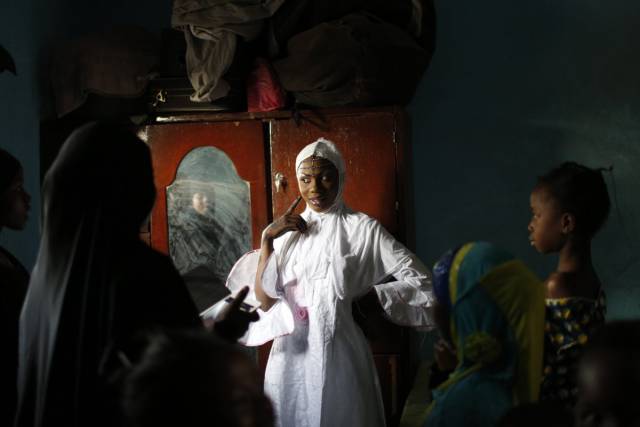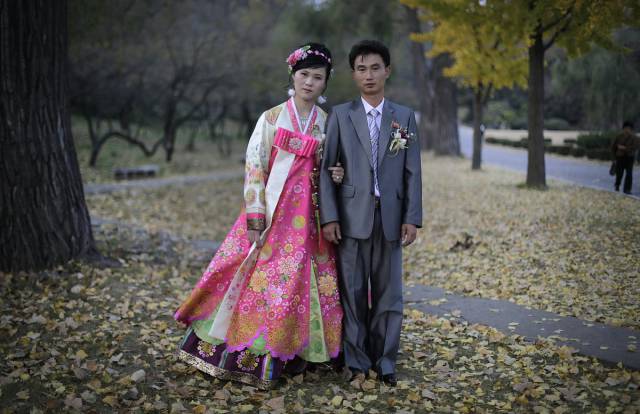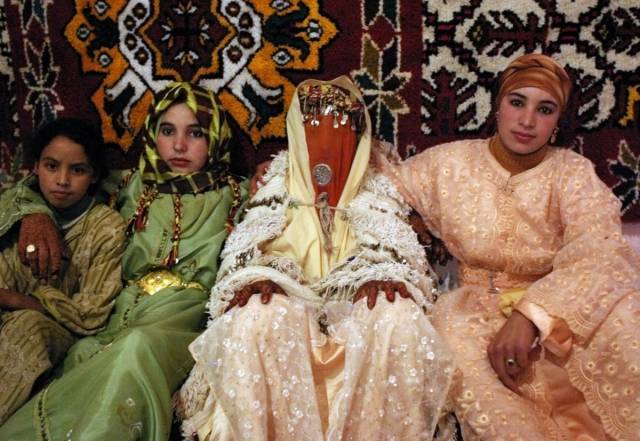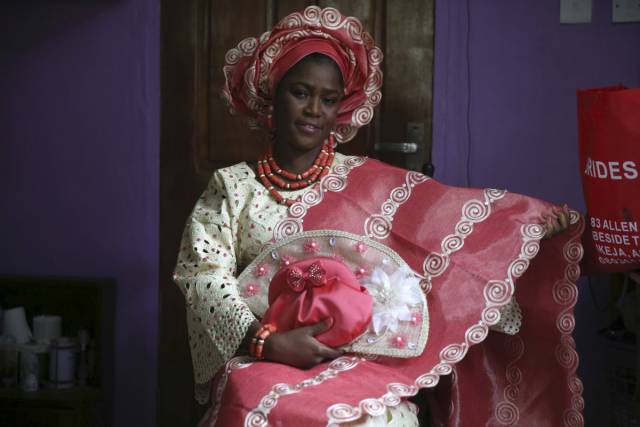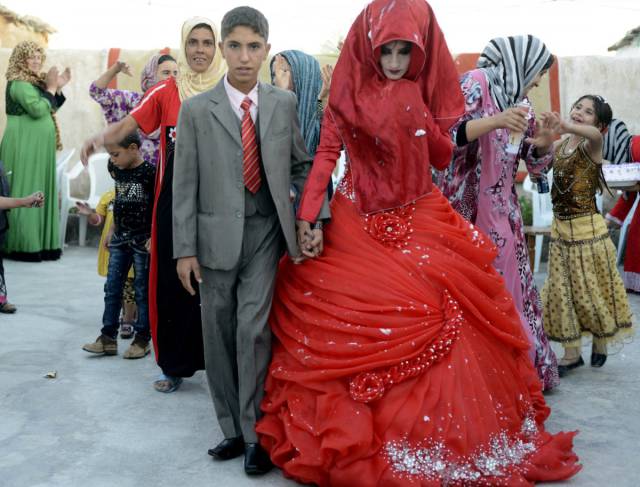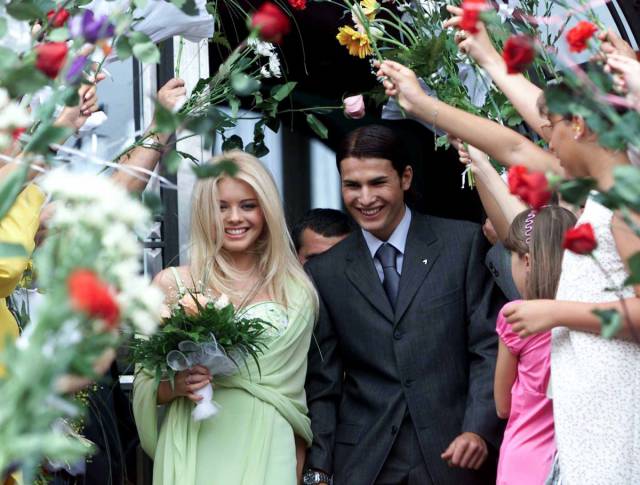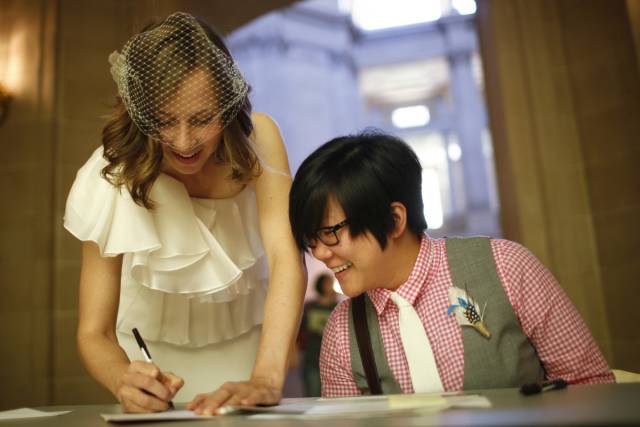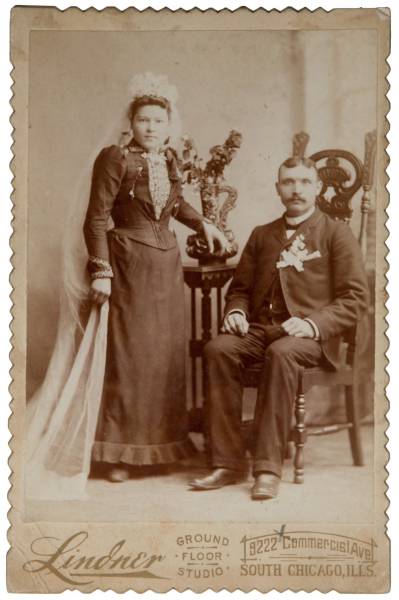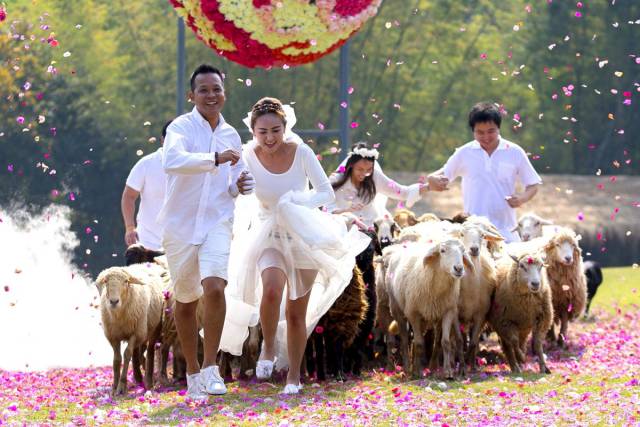Before a Turkish bride leaves her father's home for the wedding, a male relative ties a red maidenhood belt around her waist. The color signifies luck, sexuality, and happiness.
At a wedding in Ribnovo, Bulgaria, the bride gets her face painted white and decorated with colorful sequins by her female in-laws. The custom dates back centuries.
In a traditional wedding in Macedonia, the bride wears an intricately embroidered smock in red, white, and gold.
The Sri Lankan bride blends Eastern and Western traditions, donning heavily embroidered silk saris and European-looking veils. Her jewelry includes an uneven number of gemstones, as odd numbers are considered auspicious.
The traditional bride's costume among the Khakas people, who live in Russia, features a wool hat and heavy petticoat to keep brides warm in below-freezing temperatures.
In keeping with the Jewish tradition of modesty, the ultra-Orthodox bride wears a loose-fitting gown that covers everything but her face and hands. A lacy skirt grazes the floor.
The Syrian bride wears a long-sleeved gown and gold jewelry, given by her family. The dresses come in a rainbow of colors, though most brides prefer white.
A traditional bride in Tajikistan wears a simple white dress over a pair of trousers. Over the course of the ceremony, which can last days, she may change into corresponding gowns.
A traditional bride in Tajikistan wears a simple white dress over a pair of trousers. Over the course of the ceremony, which can last days, she may change into corresponding gowns.
Three days before an Indonesian woman ties the knot, she may have her nails, hands, and feet painted with birds and flowers in henna.
Deep reds, pinks, and purples are the colors of choice for a Pakistani bride. Some couples will place garlands around each other as a symbol of love and acceptance.
Sixteen embellishments, in addition to a lucky-red sari or skirt-like lehenga, adorn the Indian bride from head to toe. This custom, called Solah Shringar, includes ear cuffs, delicate chains tied around the ankles, and bright-red powder that's applied to her hair part.
Modern brides in Somalia opt for a Western-style dress and a hijab head scarf, in accordance with Islamic culture. Their hair or hands may be stained with henna.
In Nubia, the bride wears three veils: a colored one atop her head, a sheer one over her face, and a heavy white sheet that masks the head entirely.
The day before a Tibetan wedding, the groom gives his bride a wedding gown and jewelry, which may include a headdress, silver pieces that attach to her braids, or an amulet that contains a small metal statue of the Buddha.
Traditional Eritrean wedding attire includes dark-colored velvet crowns and robes in purple and gold. The bride matches her soon-to-be husband.
The Tuvan national costume reflects a nomadic way of life. Garments could easily be worn while riding a horse and feature bright colors and rich detail.
While the Palestinian bride wears a stunning white dress on her wedding day, her henna dress — worn the night before — has a special place in her heart. The color is customized to the bride, and her mother embroiders it by hand.
In the highlands above Lima, Peru, traditional brides make quite a splash in red and black gowns, made bigger by multiple layers of heavily embroidered cotton petticoats.
In the highlands above Lima, Peru, traditional brides make quite a splash in red and black gowns, made bigger by multiple layers of heavily embroidered cotton petticoats.
In Mali, the bride's pullover robe, called a kaftan, matches the color of the groom's dashiki. While white is most common, some wedding parties opt for lavender or purple, the colors of African royalty.
The traditional Korean costume, called the hanbok, has been worn by brides for thousands of years. It includes a long-sleeved jacket and a high-waist skirt made of cotton or silk.
A snow-white kimono is draped around traditional brides in Japan. A matching silk headdress, called a tsunokakushi, hides her "horns of jealousy" and signals her intent to become an obedient wife.
The Moroccan bride puts on a show with three wardrobe changes. For the reception, she trades a white kaftan, or robe, for an outfit that reflects the culture of her family's region.
A Nigerian bride stands out in her brightly colored lace blouse and patterned kaftan, often made of imported Indian fabrics. Coral beads and a headdress complete the look.
In Chechnya a dress code that emphasizes modesty is strictly enforced. Brides wear white gowns that cover them head to toe. Metal fasteners adorn outfit's bust, and a silver belt — an heirloom passed down from mother to daughter — hangs on the waist.
A traditional Iraqi bride might set the record for most wardrobe changes. Each of her seven dresses is a different color of the rainbow. Red represents love and romance.
An Italian bride's "something blue" is sometimes (but not often) replaced by a green dress or ornament, as the color is believed to bring luck and fertility.
Surprisingly, American brides didn't always wear white.
Through the 19th century, women in the US simply wore what they considered their best dress, as white cloth was impossible to clean by hand and was reserved for the wealthy.
Today, white is a go-to hue for brides around the world.

